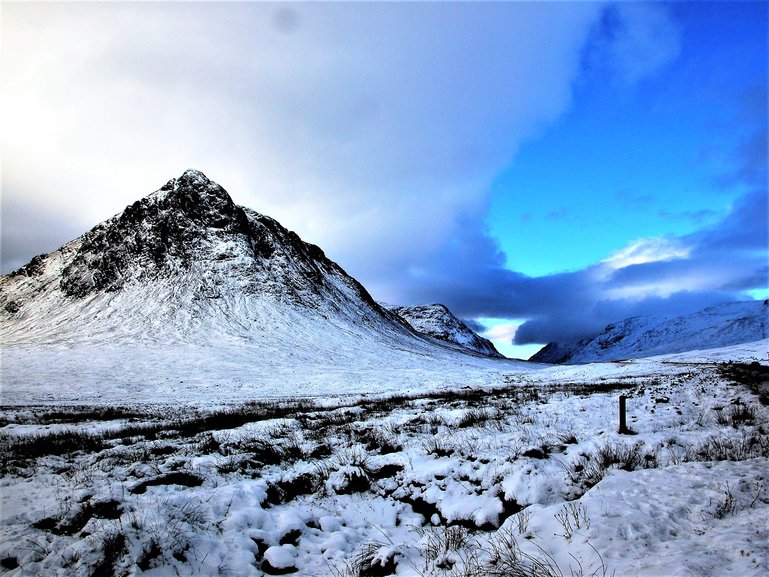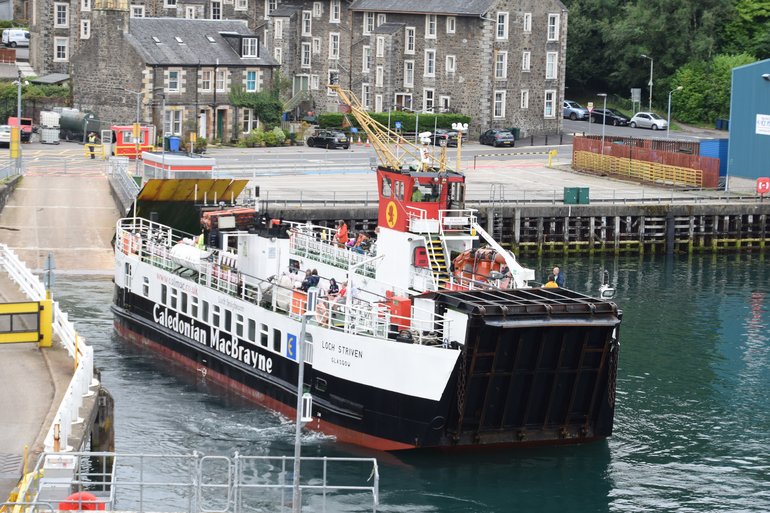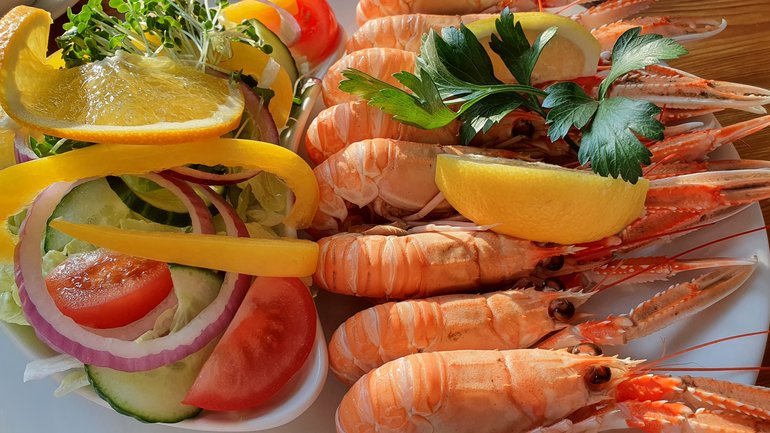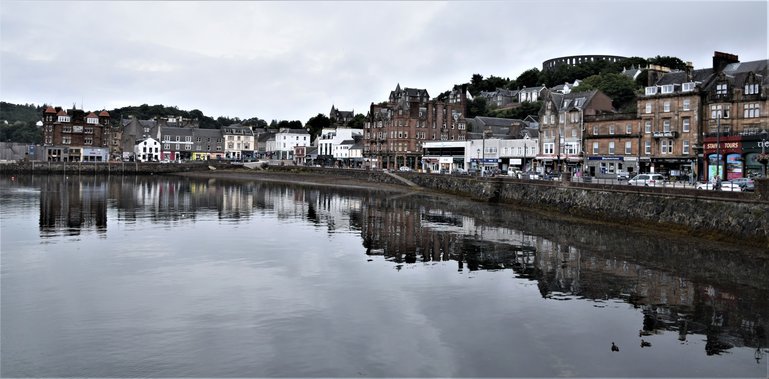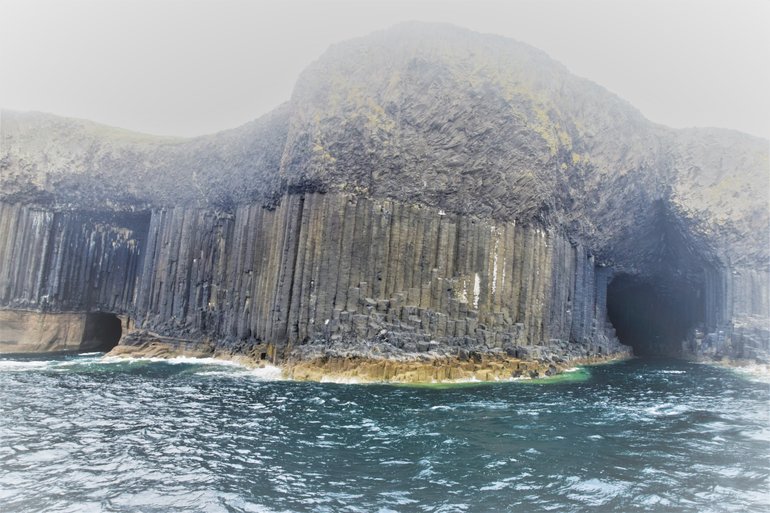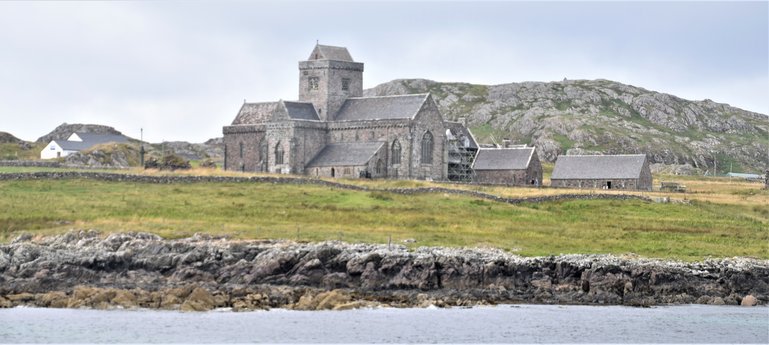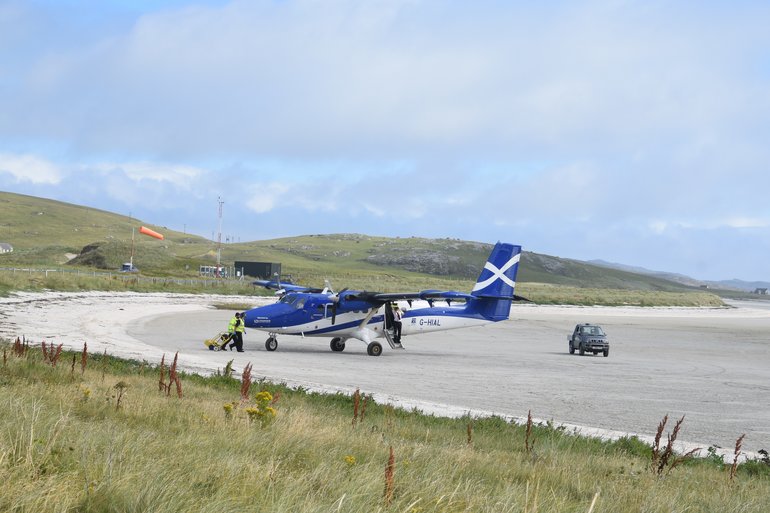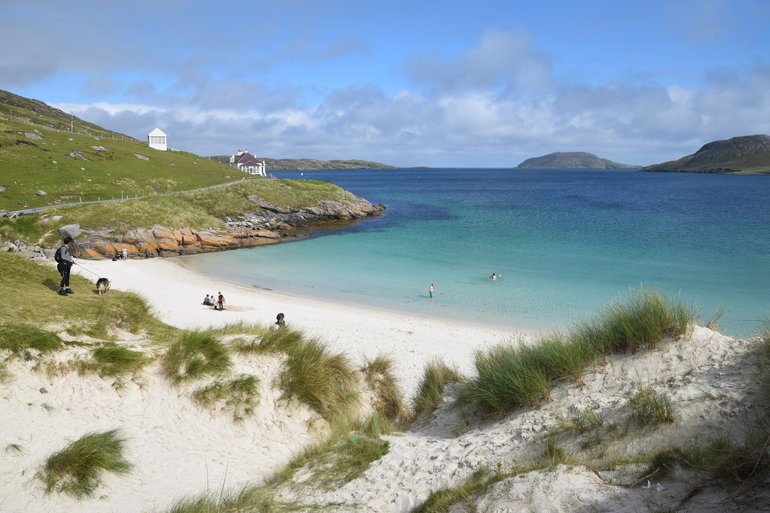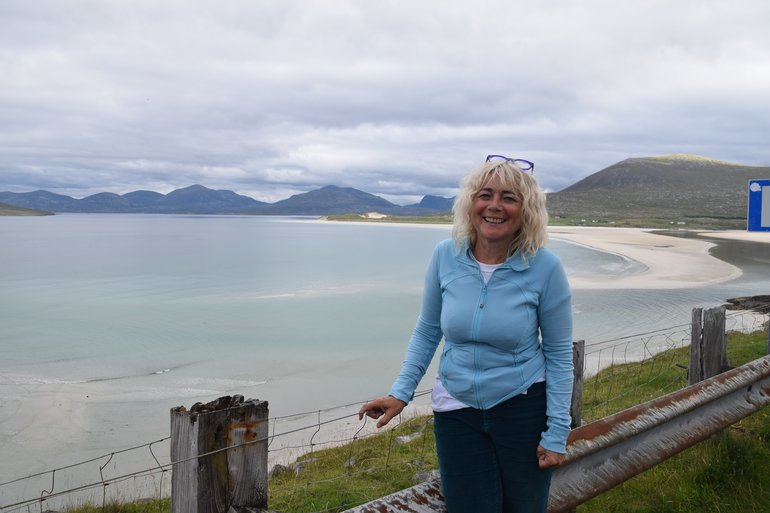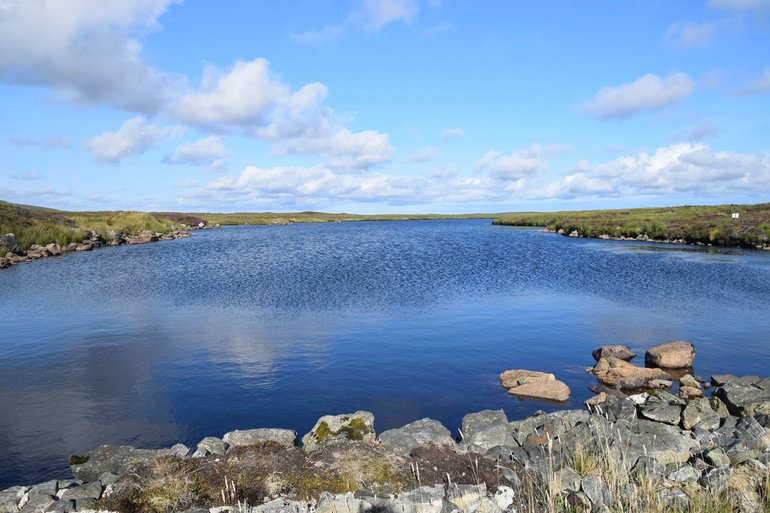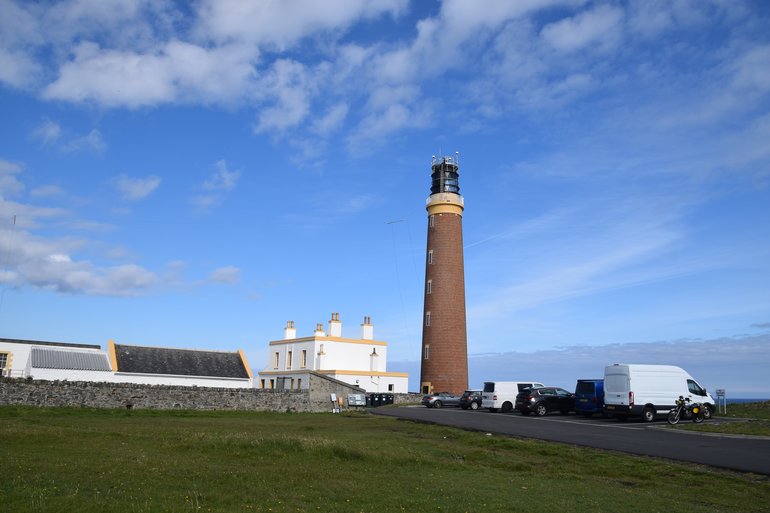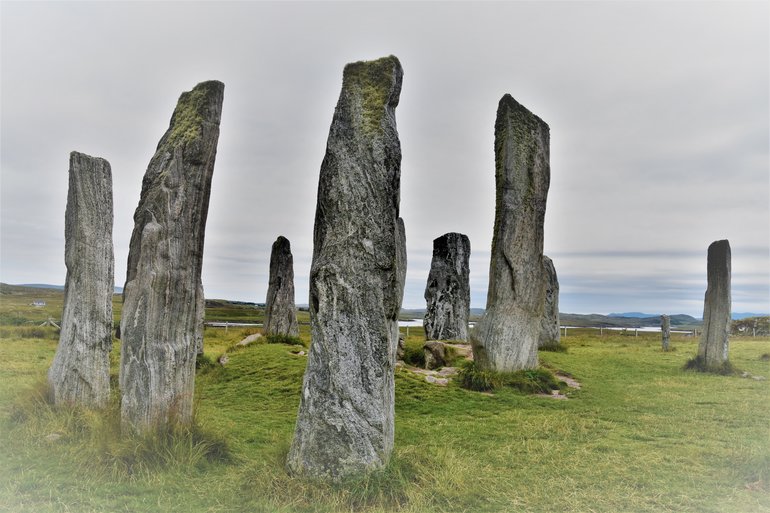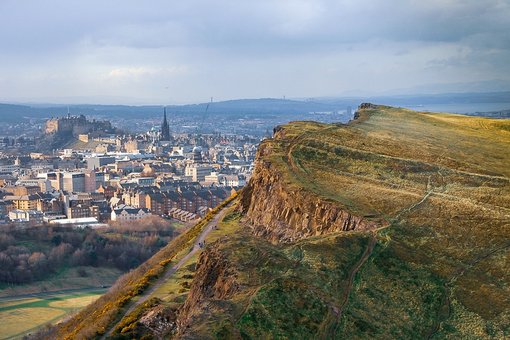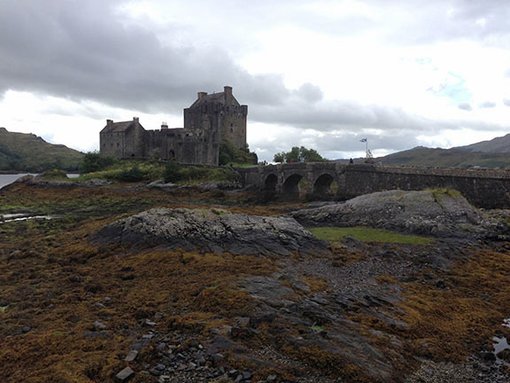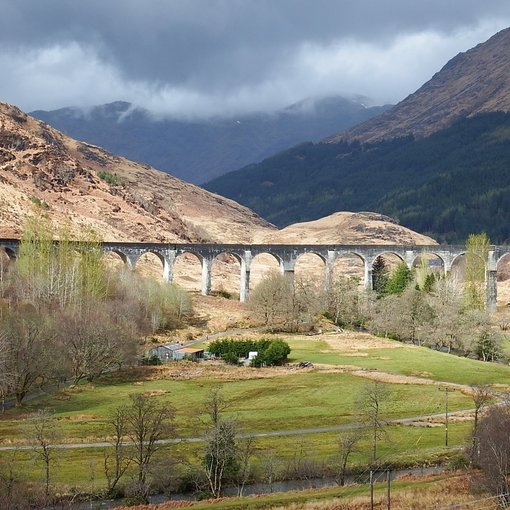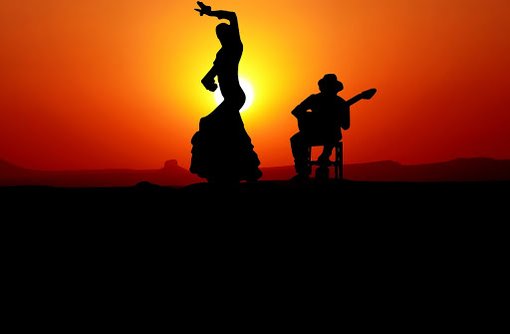The Wondrous Western Isles of Scotland
The Outer Hebrides (or the Western Isles) have been on my bucket list since it was first compiled and The Time of Covid presents a perfect opportunity to make the trip. This is an archipelago of some 50 islands lying off the Inner Hebrides. Fifteen of them are inhabited. They are about 210 kilometres from tip to toe, joined by a series of causeways and/or ferries. The first language in most areas is Gaelic, the terrain is mainly metamorphic rock and they are purported to be extremely beautiful.
Contents
Travelling in Scotland
The Weather
First of all, don't take any notice of the weather forecasts. They are invariably wrong, and thankfully, it's often brighter than expected. But the weather can change literally every minute, from showers, to cloud to sun. When it's sunny the scenery is glorious. When it's dull the mountains are mysterious and melancholy. It's very atmospheric. But getting soaked isn't much fun. So be prepared at all times.
Midges
Scotland is notorious for midges - tiny pesky little insects. Their bite is infuriatingly itchy and during their short summer breeding season they can descend in droves. You might want to take a hat with netting attached (or an Australian type hat with bobbing corks) just in case. Keep your eyes peeled and head the other way if you spot them. I don't find that they take much notice of insect repellent, though you can try. They're sadly capable of penetrating cotton T shirts with their bites. And apparently they love dark colours, so dress accordingly.
Taking the Car
You need a car in Scotland (and especially the islands ) if you're not on a tour. (Unless you're hardy and you're cycling). It pays to take it slow – single track roads with passing places are common and some of the roads are precarious switchbacks with precipitous drops. Reversing up them if you meet another vehicle isn't much fun.
When you meet another driver who has given way you have to raise a finger in thanks. The unwritten rules state that they will raise one in return: ‘It was a pleasure to wait.' Sometimes you get a whole hand or palm instead. However long Google says the journey will take you, double it. Or use the A roads instead and miss the fun – and the views.
Petrol
Keep an eye on the petrol gauge. Fuelling stations are few and far between. Many are 24 hour unmanned pumps which operate using credit cards. So make sure you have one.
Navigating
Know where you are going and keep a map close at hand. There is very little phone signal in many areas (especially in the southern Western isles and wilderness of the Highlands), so you won't be getting any GPS. Off the major roads the signposting may be non existent and (in the islands) what there is may only be written in Scottish Gaelic. Fortunately, the local people are very helpful if you get lost!
Ferries
The ferries, mostly operated by Caledonian MacBrayne (CalMac), are punctual and the staff friendly (for the most part) and tolerant of anxious driving. But make sure you book in advance and are punctual. They re very busy in the high season and if you're not there when you're supposed to be you may get bumped. And sometimes there's only one boat a day. You can get a Hopscotch Ticket that takes you through all the Western Isles from Oban to Ullapool (4 crossings in all). Many of the islands are now linked by causeways or bridges.
You are not allowed to stay in your vehicle on any of the longer crossings – and it's much nicer to get out and see the views. There are often dolphins and seals to be spotted. Though it may be very blustery. Take a coat or sit in the café. On shorter crossings some folk opt to stay in their cars (and indeed were forced to during the worst Covid times) but I wouldn't entertain the idea, unless obliged to. You can't see out and the rolling feels much worse down in the bottom. It's a recipe for sea sickness. And be prepared for your car to get doused with sea spray on any of the smaller boats. But don't worry. It will rain soon and that will wash it off.
The Time of Covid
The Scots are still very strict about regulations around Covid. Mask wearing is expected in any public indoor space, including all shops and transport. You have to sign in on Track and Trace or leave your details. And there's sanitising spray everywhere.
Food and Drink
The food in the islands is on the expensive side and varies from plentiful fish and chip shops (mostly haddock), seafood shacks ( many now closed or with limited hours due to Covid), to pubs and fine dining. Most feature salmon, smoked haddock (as in Cullen Skink soup) shellfish, haggis and venison.
The Scots are notorious historically for their less than healthy diets and there's still quite a lot of fried food around. The breakfasts are filling and all feature Stornoway black pudding, which is delicious, but doesn't sit easily with my digestion. There's also plenty of complimentary shortbread.
Whisky distilleries abound – all eager to take tourists with money on tasting tours. But there's also an increasing number of gin distilleries - some of their offerings are exceptionally pleasant.
Music
The Scots love live music – usually bands with a fiddle and many pubs provide entertainment of this kind - though sadly restricted at the moment because of Covid. Hotels and restaurants sometimes substitute recordings instead. And if you're very unlucky you'll get the bagpipes with their distinctive lilt (or wail depending on your point of view) too.
Oban
It takes me just ten hours to drive from Brighton to Oban, known as The Gateway to the Isles. So I'm happy, but utterly exhausted.
Kerrera Island and Mull beyond sit at the entrance to Oban Bay, creating a stunning backdrop. The houses are built in terraces up a steep hill and the centre is bursting with little cafes and shops. There's a small marina and a line of seafood stands along the quayside.
Oban's other title is Seafood Capital of Scotland. I order mussels from The Green Shack, which is recommended on Trip Advisor. There's a signboard advertising for a happy cheerful waiter. Judging by my reception they haven't filled the post yet. But there's a heap of perfectly cooked shellfish for a fiver. They're delicious.
The town is crowned by McCaig's Tower. Think viaduct meets Roman amphitheatre. Though this is an enormous Victorian folly and it is interesting rather than beautiful. It's a steep climb up to the folly for the view, which is obscured by tall undergrowth. And there's a car park just below it. Never mind. I'm sure the exercise was good for me.
Mull and the Inner Hebrides
First, a day trip to the Inner Hebrides - to Mull, Staffa and Iona in one day. The view from the ferry across from Oban offers even more gorgeous views across the Bay to the Tower. The sea is like a millpond, but there's a fresh breeze and I'm really glad I remembered my parka this time. It's the height of summer and I'm still underdressed. A lone dolphin puts in an appearance, leaping out of the wake and then disappearing again.
We round Kerrera, prettily decorated with fir covered islets, and head for Mull. It's a dark switchback of rounded knolls sitting on the horizon. Mysterious, but not welcoming. Maybe that's because it turns out to be extraordinarily beautiful. Mull is the fourth largest island in Scotland. On arrival at Craignure, I hop on a bus to the town of Fionnphort. It takes 75 minutes looping unsteadily along single track roads that pass through the velvety folds of steep sided glens and alongside the loveliest of lochs. It's cloudy, but the odd sparkling beam of sunlight just adds to the allure. The water in Loch Spelve is so clean that they grow the finest mussels in the country and export them by the crate. And there are castles, of course, most notably restored Duart, the home of Clan MacLean.
Staffa
Next, a half hour boat trip to Staffa. We edge along some beautifully striated rosy boulders on the peninsula in the south west of Mull ( known as the Ross of Mull). It's home to shags and seals. Then we chug out into the Atlantic. That's when the rain puts in an appearance. But all is well. The boatmen thoughtfully provide oilskins.
Staffa too exceeds expectations. The basalt scenery is extraordinarily wonderful. Fingal's Cave is definitely worth the trip, the ceiling supported by huge hexagonal pillars, the water translucent and turquoise. The Vikings gave it this name as its columnar basalt reminded them of their own houses, which were built from vertically placed tree-logs.
They play Mendelssohn's Fingal's Cave Overture via the tannoy of course. It's a perfect match. Mendelssohn is said to have sat in the cave listening to the waves crashing and then gone off to write his music. I'm especially glad to see Staffa after visiting the Giant's Causeway in Ireland.
The Legends of Finn MacCool
There are several versions of legends attached to Fingal's Cave. According to nearly all of them the columns are the remains of a causeway across the North Channel, built by the Irish giant, Finn MacCool. He had been challenged to a fight by the Scottish giant Benandonner. And Fionn wanted to find a way for the two giants to meet. In one version of the story, Fionn defeats Benandonner and returns home.
In my favourite version, Fionn decides to hide from Benandonner when he realises that his foe is much bigger than he is. Fionn's wife, Sadhbh, disguises him as a baby and tucks him in a cradle. When Benandonner sees the size of the "baby", he takes fright, deducing that its father, Fionn, must be a giant among giants. He flees back to Scotland in fright, destroying the causeway behind him so that Fionn will be unable to chase him down.
Finn became Fingal (or white stranger) in an epic poem by 18th century Scots poet-historian James Macpherson. Whatever the explanation, there are identical basalt columns (a part of the same ancient lava flow) at the Giant's Causeway.
The remainder of the tiny island is special too, with jagged cliffs and more caves and those huge, but delicately curving hexagonal formations. Though you have to negotiate a formidable set of stairs up the cliff face to get up top and hang onto a wobbly iron rail to access the cave. Both Staffa and Mull must be contenders for prettiest island in Scotland.
Iona
The island of Iona, opposite Fionnphort is famous for its abbey. This is where St Columba founded his monastery in 563 and the site was used as a base from which to spread Christianity throughout Western Europe. The earliest parts of the abbey are ancient, though it's seen several incarnations. The Vikings were particularly unimpressed and sacked the place several times. The current version was restored by Historic Scotland relatively recently.
There's also a nunnery and the Chapel of St Oran next door to the abbey. It was built in memory of a saint who was buried alive in order to sanctify the graveyard in which it stands. The graveyard is purported to hold the graves of several Scottish kings, including Macbeth and Duncan, though no one knows precisely where they are and some scholars dispute this idea entirely. Almost next door to the chapel, in turn, is the Columba Hotel. More memorable views across the sound back to Mull, with the sun casting kaleidoscopic patterns across a shimmering sea. And tea and cakes
Even the diminutive sheep with their black faces and horns are cuter than cute. And shaggy highland cattle with their long horns too. Perfect.
Barra and the Western Isles
To my surprise, the ferry from Oban to Barra takes nearly five hours. Fortunately, the sea is not too rough, but there's a slight swell, enough to make writing my blog a challenge. I'm entertained by several cyclists, Louise, David and Steven who are setting off to tackle the Hebridean Way. They talk for most of the voyage about all the different types of equipment they are carrying, how much it weighs and where they are going to pitch their tents. I'm glad I've got my car.
It's impossible to miss Kisimul Castle as we arrive. It's perched dramatically on a rock islet in the bay - hence the main town is called Castlebay. This three storey tower house is the ancient seat of the Clan MacNeil. It was abandoned in 1838 and fell into disrepair. It was repurchased by the MacNeils in 1937, restored and eventually leased to historic Scotland for an annual rent of one pound and a bottle of whisky.
Barra and Vatersay sit at the southern end of the island chain of the Outer Hebrides (the most southerly inhabited of the Western Isles) and are linked by a causeway. Barra is about five miles wide and eleven miles long and is covered in the main by a circular single track road. It takes me an hour to drive right round, going very slowly and taking lots of pictures. (Don't stop for photographs in the passing places or you get shouted at).
Barra - dise
I shouldn't have used up my superlatives so early on. It's stunning here – Barra-dise. I'm lucky as the weather forecasters have got it wrong again and what was supposed to be day-long heavy cloud has become a few showers and a considerable amount of sun, showing the island off to maximum advantage. Huzzah! The sea is as turquoise mixed with sapphire, the long sand dune backed beaches as powdery white, as any South Pacific lagoon.
The hills are velvety emerald green with patches of purple blooming heather. The small flat areas or plains abutting the beaches and running into the hills are known as machair. Machair is a rare habitat, (this is one of the few areas in the world where it is found) formed from lime-rich shell sand washed up thousands of years ago by the sea. So it's very fertile and resplendent with wildflowers.
As if all of this isn't enough the tourist highlight is the airport. Barra is the only place in the world where scheduled flights land on a beach. Two twin otters bob in and across the sandy bay from Glasgow daily – the timetable changing with the tides. I catch up with Steven and David again here (I've already passed them once on my circumnavigation of Barra) and we munch chocolate from their bag of goodies (cycle panniers have some uses) and wait for the planes to take off again, along with all the other photographers.
Then over the causeway to Vatersay, which is wilder, and even more remote and has three more spectacular beaches. The road runs out in the middle of the island, at a seemingly deserted village.
Eriskay
The ferry runs from Barra to Eriskay – a very small island with a central community centre. Apparently, Prince Charles drops in for tea sometimes. It has two other claims to fame. This is where the ship, the SS Politician ran aground in 1941, inspiring Compton Mackenzie's book (and film) Whisky Galore. They had to blow up the ship to prevent the islanders stealing the many bottles of whisky stowed onboard in the cargo hold. There's a disappointing modern pub called the SS Politician, which displays some souvenirs, including one of the stolen bottles.
And this is also the place where the other famous Prince Charles, Bonnie Prince Charlie, landed to begin his ill fated attempt to win the British crown back from the Hanoverian kings. The attractive curve of beach is named Prince Charlie's Bay. Stretching things a little there's also a unique species of convolvulus growing here, in the machair, that has been named Prince Charlie's rose. (The seed dropped off his shoe.)
South Uist
There's a straight two mile causeway from here across to South Uist (unless you want to take the car ferry). And another mainly straight road, with very few offshoots running north - south. To the west, beaches and machair. To the east, heather covered hills, in between some peat bog. There's also Flora MacDonald's birthplace (in ruins) and numerous Bonnie Prince Charlie Hiding Places.
Further north are more glittering sea lochs - reserves for geese and swans.
Benbecula
Benbecula Island is probably best known for its army base. Most people treat it as a stepping stone between North and South Uist. There's one hill in the middle. But that's a good place to stop for lunch, beside a war memorial and to admire another shimmering loch.
North Uist
North Uist is my destination, over yet another causeway. I'm setting off to circumnavigate the main roads in a clockwise direction, but almost immediately turn off too soon and am lost for over two hours. There are an abundance of lovely beaches and sand rimmed lochs, but no signposts in English. These areas are the last strongholds of Gaelic. I eventually find a Scottish Water Company man-with-a-van who kindly sets me right.
Still more gorgeous beaches, most notably Clachan Sands, and seascape vistas.
Langass is home to a Neolithic chieftain's burial site and Langass Lodge which advertises itself as having the best food in the Hebrides. Monkfish ceviche is interesting rather than tasty. The venison with rhubarb jus definitely scores more points. I would just have liked more of it. It's a tiny portion of meat. Ten out of ten for the Uist gin.
Berneray
A quick visit over the land bridge to Berneray - which, although it's tiny - boasts even bigger, better beaches along its western shores.
South Harris
Somewhat confusingly, Harris is the southern part of the Isle of Lewis. I've read that before roads were built (at vast engineering expense) the mountains of Harris made it inaccessible, so it was viewed as a separate island. I arrive there on the ferry from the Isle of Berneray. It's a breath-taking entrance - cloud enfolded mountains rise steeply and dramatically to greet us above a sea of islets. Harris is the tweed island and as you would expect there are weaving demonstrations and tweed shops signposted. Especially at Tarbert, the main town sitting on the isthmus that divides the island into North Harris and South Harris. (So three islands in one.)
South Harris has more mountains than I've seen for a while, but its real claim to fame is the beaches. A whole succession of magnificent golden swathes lining the coast. They're not only pristine, but huge, reaching deep inland and lined with the spectacular machair. Most are a few hundred yards from parking areas (designated or otherwise) from where you clamber through the sand dunes. Scarista, Seilebost and most famous of all Luskentyre.
It's a two mile stretch of difficult narrow road to reach this most sought after bay, but Luskentyre Beach actually fills the whole estuary and the tide is out. So the whole is dazzling white, riven with lustrous pools as far as the eye can see, even without the diversion. Most of the sands are dotted with groups of walkers admiring the scenery. A few hardy souls have brought windbreaks and are determined to make it a day at the seaside. It's warm for Scotland but it's only 17 degrees. I feel a stroll is much more appropriate.
North Harris
North Harris is mountainous and famed for its unusually low lying rocky landscape - almost lunar. Some of the boulders that festoon the valleys are gigantic. It's an amazing and frustrating drive on single track roads winding along lochsides. I can't stop very often, though there is one good view point across to the Shiant Isles (important seabird sites). Here I stop for a half hour chat, with George, another Hebridean Way cyclist and ex-Ofsted inspector, who is making the most of the panorama, whilst eating his lunch. Mostly, however, I'm just getting glimpses of the awe inspiring views and have to motor on, craning my neck in dangerous fashion, before I pop over into Lewis.
The Isle of Lewis
Lewis is the largest of the Western Isles and has its own mountains in the south, yet more incredible beaches, rolling moors and flat peat bog (in the north) enlivened with thousands of sparkling lochans.
Stornoway
Stornoway is the main town on Lewis and the largest town in the Western Isles. Its name drives from the Norse for ‘steering bay'. It's described as charming in some of the literature, but I'm struggling with that. Maybe it's the effect of Covid, but it feels very quiet and rundown. There are enough tourists to make finding a meal a challenge. My kind b and b host rings around for me and finds me a table at different hotels for the three nights I'm here. Though it wouldn't hurt me to go without I've ben so calorie laden since I arrived in Scotland.
There's a small working harbour full of creel boats and some pretty parkland surrounding a recently restored Victorian ‘gothic revival style castle'. This is Lews Castle. I thought this was a spelling mistake, but I've checked and it isn't. It was originally built for Sir James Matheson who bought the whole island with the proceeds from trading in Chinse opium.
The East Coast of Lewis
A small road from Stornoway winds past Tolsta (it takes much less than 24 hours) and its stretches of golden sand up to Garry Beach. Backed by jaw dropping hillsides it's yet another amazing panorama. There's a crossing over a stream that's been dubbed ‘the bridge to nowhere.' At one time, there were ambitious plans to extend the route north. Instead it's just a dead end - with swarms of teeny midges that soon infiltrate the car.
The Butt of Lewis
Despite its unfortunate name (I'm not going to get into any bad taste jokes here though I'm tempted, especially as there are plenty of cracks in the cliffsides) and melancholy reviews, the lighthouse and cliffs here are well worth a visit. I'm fortunate that the sun is shining on the lighthouse (another Stevenson design, but this time in brick) and the cliffs and stacks covered in wheeling seabirds. There's a guy in a canvas chair, complete with woolly hat and gloves and binoculars, taking notes. He says he's here for a month. On holiday. There's also the prettiest of coves.
Further south is the Thrushel Stone, the tallest single standing stone in Scotland. At Bragar is a whalebone arch made from the jaw of a harpooned blue whale that drifted ashore and then it's on to more historical sites.
Gearrannan Blackhouse Village
Above yet another lovely bay is the Gearrannan Blackhouse Village. These are traditionally built drystone walled and thatched crofters cottages preserved as they were utilised in the mid twentieth century before the workers moved into the modern ‘white (cleaner) houses up the road. The houses are fascinating and utterly picturesque – Scottish chocolate box, but its not the happiest of visits. I pay £4.20 for entrance, only to discover that you can actually enter the site free as some of the cottages are now self catering rentals. The charge is actually only for the two cottages now operating as rentals. The museum is packed with tourists and its impossible to move inside. And no-one is checking the tickets.
I decide that lunch is called for and opt for the café, where the blackboard announces all manner of fishy delights. Maybe they don't have a cloth to clean it with. Fish is off (the waiter happily announces this to everyone separately as they try to order it. I end up with an anaemic looking plate of microwaved jacket potato, cream cheese and iceberg lettuce. And then I'm overcharged.
Callanish Standing Stones
The Neolithic standing stones at Callanish are very popular too. Like the circles at Orkney they command a great view - over Loch Roag. You can even see the Flannan Islands (of deserted lighthouse fame) 15 miles out to the west.
The chamfered stones at Callanish have a more complex arrangement than the megaliths of Stenness. These are set out in the shape of a Celtic cross, with a central circle surrounding a chamber with a cairn, marking a grave. The sun's shadow hits the site of the grave at sunset of the Equinox. I'm wary now. Entrance to the stones alone is free, so I've by-passed the exhibition. As with Stenness the stones are estimated to be over 5000 years old and no-one knows exactly what their purpose is. The visitor centre can only speculate. And I'm happy to do that for myself.
Great Bernera
Despite its name Bernera is a small, rugged island with another three mile stretch of sand, reached by a bridge from Lewis, which was the first precast concrete bridge in the country. It's currently being replaced by a giant steel structure.
The Uig Area of Lewis
The south western part of Lewis has arguably the best scenery of all. The lochs are simply gorgeous, speckled with islets and the beaches are incredible.
What's Next, After the Western Isles?
I'm booked on the early ferry from Stornoway to Ullapool. It's a dull wet day and the boat is full of miserable shell shocked passengers who've had to get up too early on a Sunday. ( They're lucky, they never used to run Sunday services at all.)
On the plus side the sea is calm and the boat hardly rolls as we steam across the Minch, the body of water that separates the northern Western Isles from the mainland and Skye. Now for the North Coast 500!
Scotland Transportation United Kingdom Weather Europe Food Island Outer Hebrides
Share this tip:
Written by suetravels
See also
Accommodations
Tours and activities
Wine tasting with Ancient Greek varieties in Mykonos
Enjoy our Greek wine tasting explore the wines, learn about the Greek gods and mythology and fall in love with the island of Mykonos.
Discover the Fjords of Kvaløya
Join a scenic drive along the coast of Kvaløya Island with a local guide. See the fjords, mountains, valleys, small fishing villages and open sea view within 60 km distance from Tromsø. Enjoy scenic photo stops, Norwegian snacks and a warm lunch in our home-office in Ersfjordbotn village.
